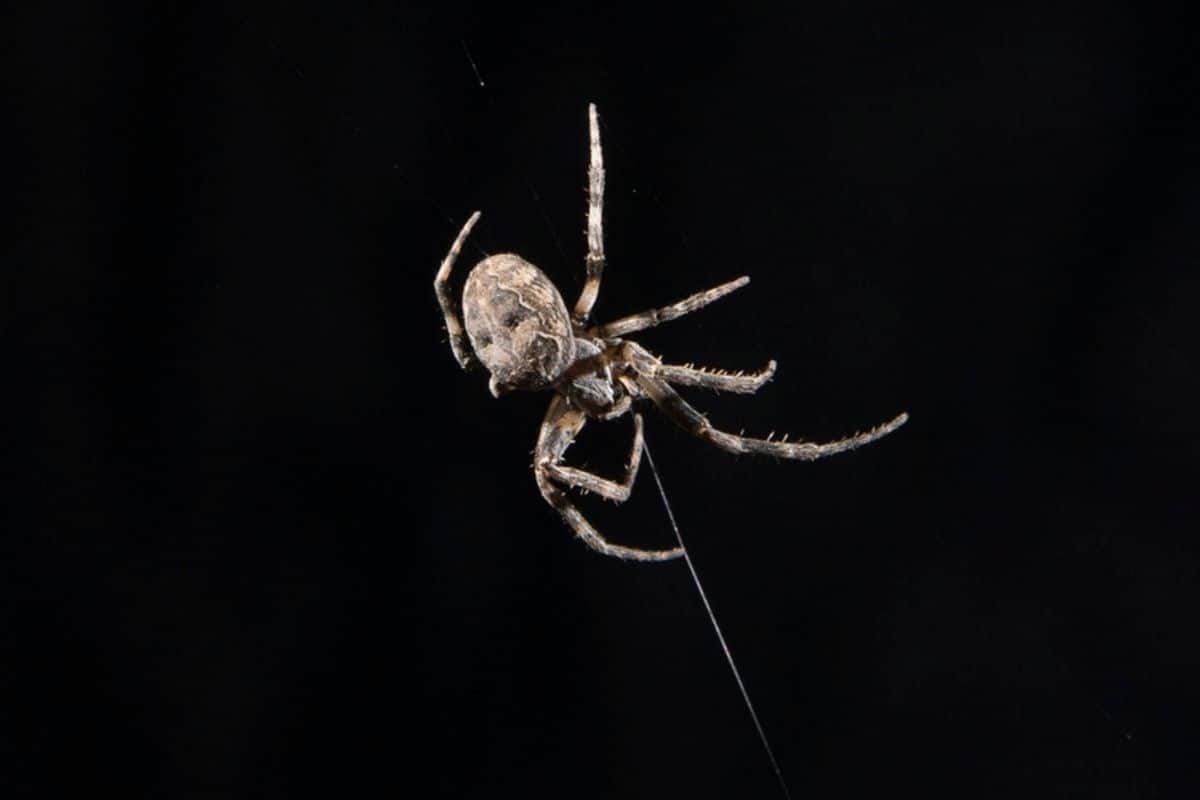
It’s the first evidence that some spiders outsource ‘hearing’ to their webs; a finding that could lead to the development of interesting human applications.
Everyone knows that humans—and most other vertebrates for that matter—can hear using ears. Sound is picked up by the eardrum, after which the brain eventually interprets the sound stimuli. But what about insects or arthropods, such as a spider, which don’t even have ears?
Spider can hear without ears
Spiders don’t have ears like we do. Scientists have therefore long assumed that spiders are incapable of hearing. However, that is increasingly changing. It has been shown that some spider species can hear just fine, even if it goes against what most people expect. In fact, the Deinopis can even pick up sounds of stealthy predators or unsuspecting prey meters away. They do this by means of certain sensory organs on their legs. But that’s not all. One new study proves that some spider species can also hear through their webs.
Hearing aid
Spiders are known to react when something in their web – for example prey – causes vibrations. But researchers discovered that orbweb spiders – known from the famous children’s book ‘Charlotte’s Web’ – also respond to sounds in the air. A single strand of spider silk is so thin and sensitive that it can detect the movement of vibrating air particles that make up a sound wave. Orbweb spiders are also known to make large webs, creating a kind of immense ‘hearing aid’, with a sound-sensitive surface that is 10,000 times greater than the spider’s own hearing.
Orbweb spiders (Araneidae) are a family of spiders that number about three thousand species worldwide. Some tropical species are known for large webs. Orb web spiders often have a large, strikingly colored and marked abdomen. The legs contain 3 claws. They have eight eyes, the middle four of which often form a square. The body length varies from 0.2 to 4.6 cm.
The researchers rely on experiments in a completely soundproof room. Here several orb web spiders were released and enthusiastically started building webs. Next, the team observed the spiders’ response to various tones played from ten feet away.
Super sensitive web
Surprisingly, they found that spiders respond to noise levels as low as 68 decibels. They then placed the sound source at a 45-degree angle to see if the spiders behaved differently. They found that the spiders not only located the sound source, but they could determine the direction of the sound with 100 percent accuracy. And that’s thanks to their super-sensitive web, which ensures that sound is captured with maximum efficiency. The spiders can then change the tension on the delicate strands of spider silk by ‘crouching’ or stretching. This fine-tunes the web, allowing the spider to pick up different frequencies.
Human Applications
Not only does the study dispel the notion that spiders couldn’t hear, it also shows that they are very good at it and even cleverly outsource it to their web. “The spiders show that it is feasible to perceive sound using viscous forces in the air on thin fibers,” said researcher Ron Miles. And that could be interesting for human applications. For example, the study could lead to the development of extremely sensitive, bio-inspired microphones for hearing aids and mobile phones. “If it works in nature, maybe we should take a closer look at it,” Miles says.
In future experiments, the researchers want to further explore how exactly the spiders make use of the sound they can detect using their web. In addition, the team wants to test whether other types of web-weaving spiders also use cobwebs to improve their hearing. “It’s reasonable to assume that a similar spider on a similar web would react in a similar way,” Miles said. “But we can’t draw any conclusions about that yet.” Future studies should therefore unravel more about the amazing properties of spiders.
Source material:
†New study shows spiders use webs to extend their hearing” – Binghamton University
Image at the top of this article: Jonathan Cohen